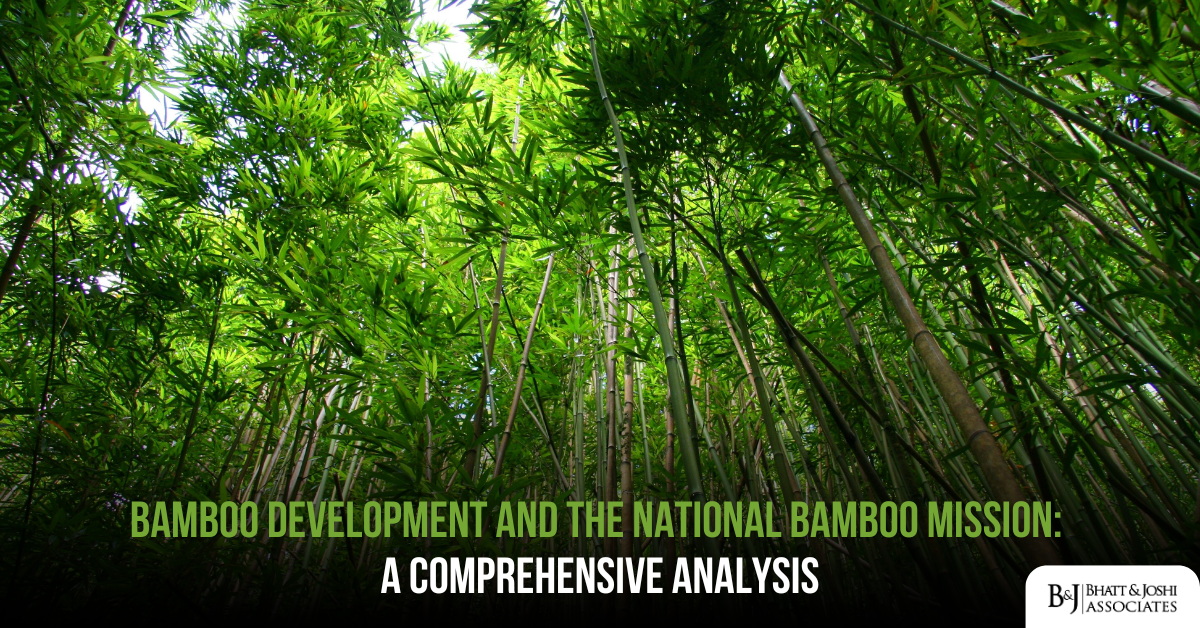Introduction
Bamboo, often referred to as ‘green gold’, has emerged as a vital resource in India’s quest for sustainable development and rural economic empowerment. The National Bamboo Mission (NBM) represents a concentrated effort by the Government of India to harness the potential of bamboo cultivation, processing, and utilization for economic and environmental benefits. The mission’s comprehensive scope encompasses various aspects of bamboo sector development, from cultivation to market linkages, making it a cornerstone of India’s agricultural and rural development strategy. Through strategic interventions and focused implementation, the NBM aims to transform the bamboo sector into a significant contributor to the nation’s economic growth while ensuring environmental sustainability and rural prosperity.
Historical Context of Bamboo Development in India
The journey of bamboo development in India is deeply rooted in the nation’s cultural and economic heritage, spanning centuries of traditional knowledge and practices. In pre-independent India, bamboo cultivation and utilization were primarily managed under forest departments, with communities having limited rights over this valuable resource. The traditional approach viewed bamboo mainly as a forest product, subject to strict regulations and controls under colonial forest laws.
The post-independence era marked a gradual shift in the perception and management of bamboo resources. The government began recognizing bamboo’s potential beyond its traditional uses, acknowledging its role in economic development and environmental conservation. This period witnessed the emergence of various state-level initiatives aimed at promoting bamboo cultivation and utilization, though these efforts remained somewhat fragmented and lacked a cohesive national strategy.
The 1980s brought a significant transformation in the approach toward bamboo development. Policy makers and agricultural experts started viewing bamboo as an agricultural crop rather than merely a forest product. This shift in perspective was crucial in paving the way for more comprehensive development programs. The growing recognition of bamboo’s versatility and its potential contribution to rural livelihoods led to increased focus on research, development, and promotion of bamboo cultivation outside forest areas.
National Bamboo Mission: Overview and Evolution
The establishment of the National Bamboo Mission marked a watershed moment in India’s approach to bamboo development. Launched in 2006-07 as a Centrally Sponsored Scheme under the Ministry of Agriculture and Farmers Welfare, the mission represented the first coordinated national effort to develop the bamboo sector comprehensively. The initial phase of the mission focused primarily on increasing the area under bamboo cultivation and improving productivity.
A significant transformation occurred in 2018-19 when the mission underwent extensive restructuring. The reformed National Bamboo Mission, now operating under the National Mission for Sustainable Agriculture (NMSA), adopted a more holistic approach to sector development. This restructuring brought about fundamental changes in the mission’s implementation strategy, introducing new components and strengthening existing ones to address the entire value chain of bamboo production, processing, and marketing.
The evolution of the mission reflects a deeper understanding of the challenges and opportunities in the bamboo sector. The restructured mission places greater emphasis on market linkages, value addition, and enterprise development, recognizing that sustainable development of the sector requires strong market orientation and economic viability. The mission’s scope has expanded to include support for research and development, technology transfer, skill development, and marketing support, making it a truly comprehensive initiative for sector development.
Legal Framework and Policy Environment for Bamboo Development in India
The legal framework governing bamboo development in India has undergone transformative changes that reflect the evolving understanding of bamboo’s role in rural development and environmental conservation. The most significant legislative change came through the 2017 amendment to the Indian Forest Act, 1927, which revolutionized the legal status of bamboo by removing it from the definition of “tree.” This landmark amendment effectively liberated bamboo grown on non-forest lands from requiring felling and transit permissions, marking a decisive shift from the colonial-era restrictions that had long hampered the sector’s growth.
The policy environment surrounding bamboo development has been further strengthened by various supportive legislations. The Forest Rights Act of 2006 plays a crucial role in recognizing the rights of forest-dwelling communities over bamboo resources. This recognition extends beyond mere access to include rights over collection, processing, and sale of bamboo products. The Scheduled Tribes and Other Traditional Forest Dwellers Act has similarly empowered traditional communities by acknowledging their rights over minor forest produce, including bamboo, thereby creating a more inclusive framework for resource management.
Implementation Strategy and Components
The implementation strategy of the National Bamboo Mission embodies a comprehensive approach to sector development. At its core lies the recognition that successful bamboo development requires simultaneous attention to multiple aspects of the value chain. The strategy begins with the fundamental aspect of area expansion, focusing on identifying suitable lands for bamboo cultivation across different agro-climatic zones. This approach takes into account not only the ecological suitability but also the socio-economic context of different regions.
The mission’s emphasis on nursery development represents a crucial component of its implementation strategy. Quality planting material forms the foundation of successful bamboo cultivation, and the mission has established a network of nurseries across the country. These nurseries serve as centers of excellence, not only producing high-quality planting material but also acting as demonstration units for scientific cultivation practices. The involvement of both government and private sector in nursery development has created a sustainable model for ensuring the availability of quality planting material.
Economic Impact and Market Development
The economic implications of the National Bamboo Mission extend far beyond direct agricultural benefits. The mission has catalyzed the emergence of a vibrant bamboo-based economy, creating multiple layers of economic activity across rural and urban areas. The development of bamboo markets has created new channels for farmers to realize better value for their produce. These markets serve not only as trading platforms but also as information centers where producers and buyers can interact and understand market demands better.
The establishment of bamboo industrial clusters has proven particularly effective in promoting value addition and employment generation. These clusters have become hubs of innovation, where traditional craft meets modern technology, resulting in products that cater to contemporary market demands. The mission’s support for market development has included efforts to create linkages with both domestic and international markets, opening new avenues for bamboo products from India.
Research and Development Initiatives of the National Bamboo Mission
Research and development under the National Bamboo Mission has evolved into a multi-dimensional program addressing various aspects of bamboo cultivation and utilization. The research initiatives span across genetic improvement, cultivation practices, processing technologies, and product development. Institutions involved in bamboo research have developed improved varieties that offer better yield and quality, while also being suited to different agro-climatic conditions. The research has also focused on developing sustainable harvesting practices that ensure long-term productivity of bamboo plantations.
The technological advancement in bamboo processing has been particularly noteworthy. Research institutions have developed new technologies for treatment, preservation, and processing of bamboo, making it more suitable for industrial applications. These developments have helped in expanding the range of bamboo-based products, from traditional crafts to modern industrial materials. The research has also contributed significantly to understanding bamboo’s role in environmental conservation, particularly its potential for carbon sequestration and soil conservation.
Conclusion: The National Bamboo Mission’s Contribution to Sustainable Development
The National Bamboo Mission stands as a testament to India’s commitment to sustainable development and rural empowerment. Through its comprehensive approach to sector development, the mission has created a framework for transforming bamboo from a traditional forest resource into a dynamic driver of rural economic growth. The success achieved thus far demonstrates the potential of well-planned interventions in natural resource management to create lasting economic and environmental benefits.
Looking ahead, the continued evolution of the bamboo sector will depend on maintaining the momentum created by the mission while addressing emerging challenges. The integration of modern technology, market-oriented approach, and traditional knowledge has created a robust foundation for future growth. As India moves forward with its sustainable development agenda, the bamboo sector, supported by the National Bamboo Mission, is well-positioned to play an increasingly important role in achieving both economic and environmental objectives. The lessons learned from this initiative offer valuable insights for similar programs globally, highlighting the importance of comprehensive, well-coordinated approaches to natural resource development and rural economic transformation.
The journey of bamboo development in India, guided by the National Bamboo Mission, demonstrates that successful natural resource management requires a balance between conservation and utilization, tradition and innovation, and local needs and global opportunities. As the sector continues to evolve, this balance will remain crucial for ensuring sustainable growth and meaningful impact on rural livelihoods and environmental conservation.














